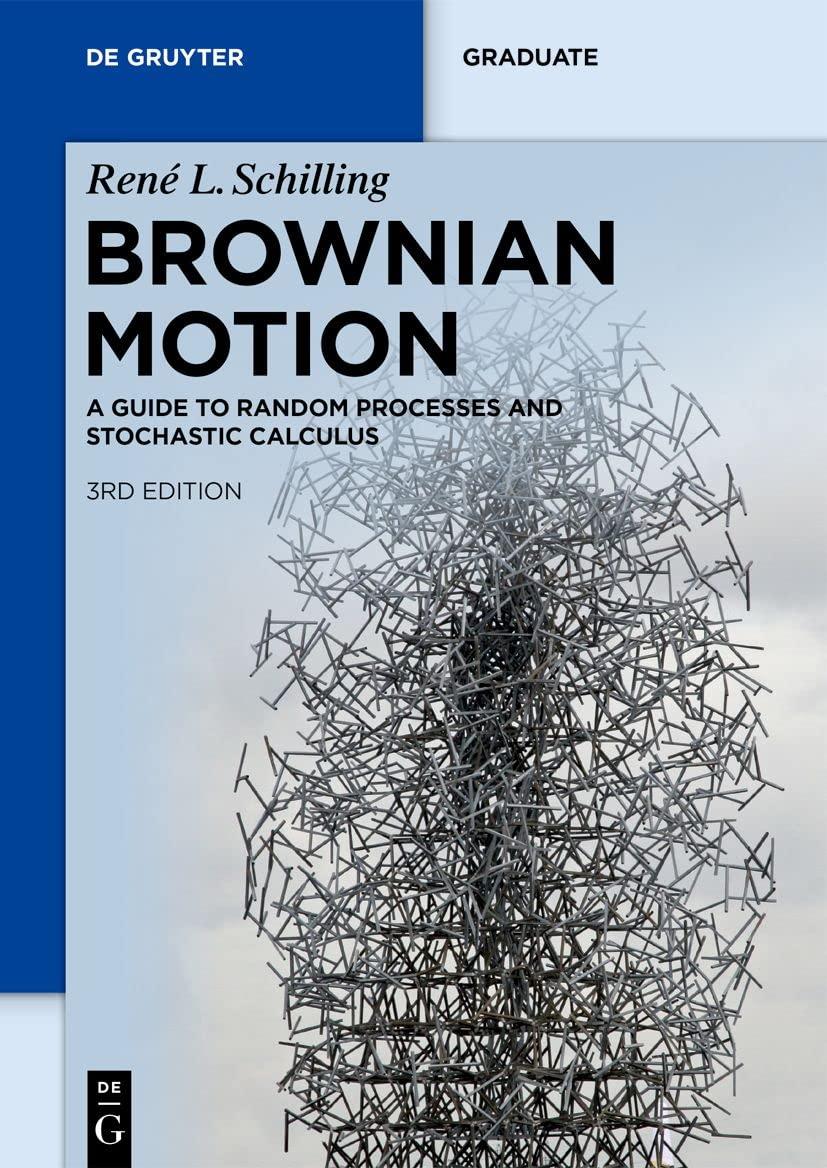(Quadratic variation) Let ((B(t))_{t geqslant 0}) be a one-dimensional Brownian motion. Consider the random variables (Y_{n}:=sum_{k=1}^{n}left(Bleft(frac{k}{n}ight)-Bleft(frac{k-1}{n}ight)ight)^{2}). a)...
Question:
(Quadratic variation) Let \((B(t))_{t \geqslant 0}\) be a one-dimensional Brownian motion. Consider the random variables \(Y_{n}:=\sum_{k=1}^{n}\left(B\left(\frac{k}{n}ight)-B\left(\frac{k-1}{n}ight)ight)^{2}\).
a) Find \(\mathbb{E} Y_{n}\) and \(\mathbb{V} Y_{n}\).
b) Determine the probability density of \(Y_{n}\).
c) Find the characteristic function \(\phi_{n}(\xi)=\mathbb{E} e^{i \xi Y_{n}}, \xi \in \mathbb{R}\), and determine the \(\operatorname{limit}^{2} \lim _{n ightarrow \infty} \phi_{n}(\xi)\).
d) Show that \(\lim \mathbb{E}\left[\left(Y_{n}-cight)^{2}ight]=0\) and determine the constant \(c\).
Fantastic news! We've Found the answer you've been seeking!
Step by Step Answer:
Related Book For 

Brownian Motion A Guide To Random Processes And Stochastic Calculus De Gruyter Textbook
ISBN: 9783110741254
3rd Edition
Authors: René L. Schilling, Björn Böttcher
Question Posted:





